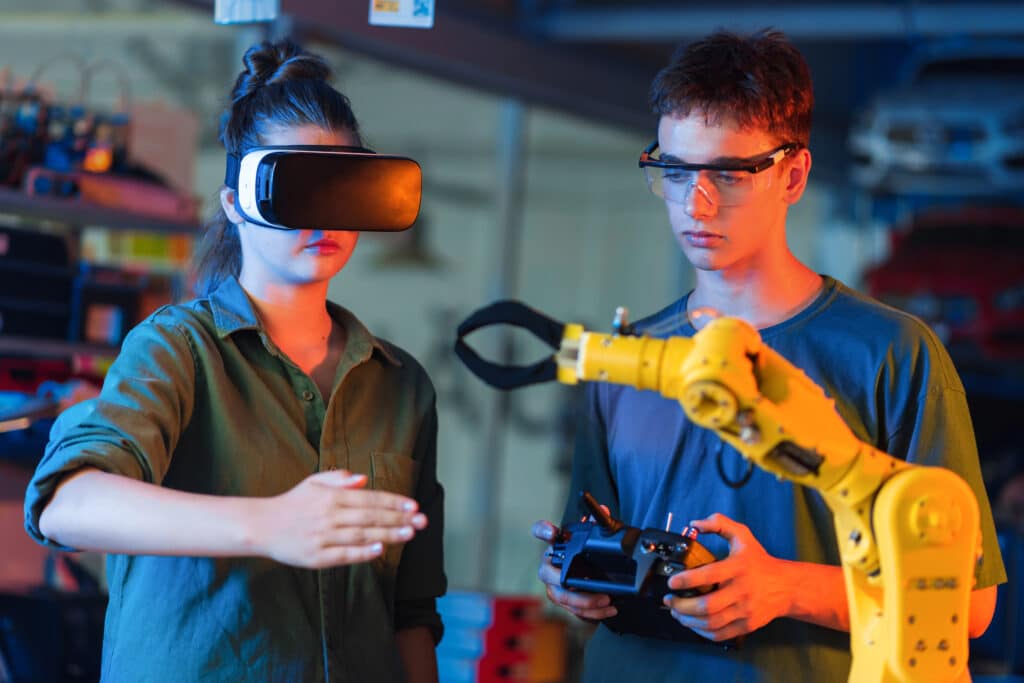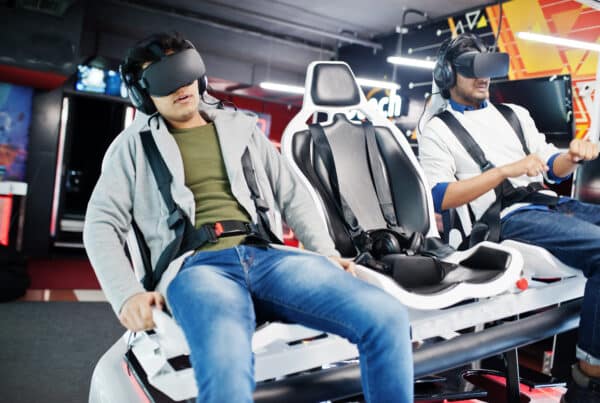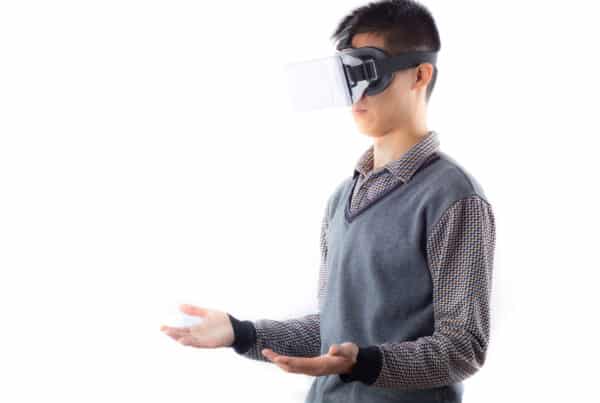
Introduction to Industrial Augmented Reality (AR)
Hey there! Let’s delve into the world of Industrial Augmented Reality (AR) and see how it’s transforming the landscape of manufacturing and maintenance. Industrial Augmented Reality is a cutting-edge technology that overlays digital information onto the physical world, providing real-time insights and guidance. It’s like having a digital assistant that helps you navigate complex tasks with ease. In recent years, AR has been rapidly adopted in the industrial sector, revolutionizing how we approach production, maintenance, and workforce training.
Applications of AR in Manufacturing
Industrial Augmented Reality is making waves across various manufacturing processes, enhancing efficiency and accuracy in ways that were previously unimaginable.
Guiding Production Processes
One of the most significant applications of AR in manufacturing is guiding production processes. Imagine working on a complex assembly line with real-time instructions and visual overlays guiding you through each step. In sectors like automotive and aerospace, AR provides assembly guidance, ensuring that every component is placed with precision. This not only speeds up production but also reduces errors, leading to higher-quality products.
Quality Control Enhancements
Quality control is another area where AR shines. By overlaying digital information onto physical products, AR helps identify defects and ensure quality. Imagine catching a flaw in a car engine before it leaves the assembly line. AR allows for early error detection, saving time and resources by preventing costly recalls and rework.
Efficient Prototyping and Design
AR also plays a crucial role in prototyping and design. Engineers can use virtual models to visualize product designs before creating physical prototypes. This approach significantly impacts cost and time savings, especially when customizing products. Imagine tweaking a design in real-time without the need for multiple physical prototypes—it’s a game-changer!
Impact of AR on Maintenance and Repairs
When it comes to maintenance and repairs, AR is a powerful tool that reduces downtime and enhances efficiency.
Reduced Downtime with Remote Assistance
AR enables technicians to access remote expert guidance, addressing technical issues faster. Imagine a technician using an AR headset to receive step-by-step repair guidance from an expert located miles away. This remote assistance reduces downtime and ensures that repairs are carried out accurately and efficiently.
Predictive and Preventive Maintenance
AR is also instrumental in predictive and preventive maintenance. By monitoring equipment health, AR can identify potential failures before they occur. This proactive approach reduces costly breakdowns and unexpected repairs, ensuring that machinery operates smoothly and efficiently.
Hands-Free Access to Manuals and Instructions
Imagine having hands-free access to maintenance protocols and parts information while working on a repair. AR devices provide visual guidance, allowing technicians to focus on the task at hand without juggling manuals or instructions. This hands-free access enhances safety and efficiency, making maintenance tasks more manageable.
Training and Upskilling Workforce Using AR
AR is revolutionizing workforce training and upskilling, providing immersive and interactive learning experiences.
AR as a Training Tool for New Workers
For new workers, AR offers immersive, visual instructions that shorten training times. Imagine onboarding new employees with AR simulations that provide hands-on experience in a safe, controlled environment. From safety training to equipment handling, AR makes learning engaging and effective.
Upskilling Existing Employees
AR also supports the continuous skill development of existing employees. By providing augmented overlays and step-by-step guidance, AR helps employees adapt to new machinery and processes more effectively. This ongoing upskilling ensures that the workforce remains agile and capable of handling evolving industrial demands.
Key Benefits of AR in Industrial Settings
The adoption of AR in industrial settings brings a host of benefits that enhance productivity and safety.
- Increased Efficiency and Accuracy: Augmented Reality streamlines complex manufacturing tasks, improving efficiency and accuracy. By providing real-time guidance, AR minimizes errors and enhances product quality.
- Enhanced Safety: AR reduces human error and enhances safety by providing visual instructions and alerts. This proactive approach ensures that workers operate in a safe environment.
- Greater Flexibility and Scalability: AR offers flexibility in production and maintenance workflows, allowing for easy adaptation to changing demands. This scalability is crucial for industries looking to stay competitive in a dynamic market.
Challenges and Limitations of Industrial AR
Despite its potential, industrial augmented reality faces several challenges that need to be addressed.
Technical Challenges
Integrating AR with existing systems can be technically challenging. Ensuring compatibility and seamless operation requires sophisticated technology and expertise.
High Initial Costs
The initial costs of implementing AR technology can be high, and skilled personnel are needed to manage and maintain these systems. However, the long-term benefits often outweigh these initial investments.
Privacy and Data Security
Continuous tracking and data collection raise privacy and data security concerns. Ensuring that AR systems are secure and compliant with regulations is essential for widespread adoption.
Case Studies and Examples
Several companies have successfully implemented AR in their operations, showcasing its transformative potential.
- General Electric: GE uses AR for maintenance and repair tasks, reducing downtime and improving efficiency. By providing technicians with real-time guidance, GE has decreased maintenance times and error rates.
- Siemens: Siemens employs AR in manufacturing processes, enhancing quality control and production efficiency. AR has enabled Siemens to streamline operations and improve product quality.
- Lockheed Martin: In the aerospace sector, Lockheed Martin uses AR for assembly guidance, improving accuracy and reducing production times. AR has become an integral part of their manufacturing process, driving operational excellence.
Future Trends in Industrial Augmented Reality
The future of industrial Augmented Reality is bright, with advancements in hardware and software driving innovation.
Advances in AR Hardware and Software
Emerging technologies promise to enhance AR’s capabilities, offering improved accuracy and adaptability. From advanced sensors to sophisticated software, these innovations will further integrate AR into industrial applications.
Growth Projections and Future Innovations
As AR technology continues to evolve, its adoption in manufacturing and maintenance is expected to grow. Future innovations will focus on enhancing real-time responsiveness and expanding AR’s applications across various industries.
Conclusion: The Transformative Potential of AR in Industry
Industrial Augmented Reality is revolutionizing manufacturing and maintenance, offering a wealth of benefits that enhance efficiency, safety, and productivity. By providing real-time guidance and insights, AR transforms how we approach complex tasks, driving operational excellence. As technology continues to advance, the future of AR in industry holds exciting possibilities, promising to reshape the landscape of manufacturing and maintenance.
Revolutionize manufacturing and maintenance with Industrial Augmented Reality! Contact Virtually Anywhere today to discover how AR enhances efficiency, reduces errors, and streamlines complex processes. From hands-free guidance to real-time data visualization, AR is transforming industrial operations. Start optimizing your workflow with AR today!
People Also Ask
- How is augmented reality used in manufacturing?
AR is used to guide production processes, enhance quality control, and streamline prototyping and design. - What are the benefits of augmented reality in industrial settings?
Augmented Reality increases efficiency, enhances safety, and offers flexibility and scalability in workflows. - Can AR improve worker safety in manufacturing?
Yes, AR reduces human error and enhances safety by providing visual instructions and alerts. - What industries benefit most from augmented reality?
Industries like manufacturing, aerospace, automotive, and maintenance benefit significantly from AR’s applications.




